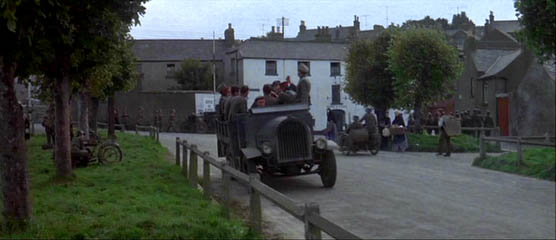|
CK Roach's comments in white: The Blue Max is a classic aviation movie that I remember from my childhood. As a kid interested in anything that related to flying, this was one movie that really fueled my fancy. Due to the limitations of childhood (rigidly imposed bedtimes), I never got to see it completely until it came to DVD. It turns out that the DVD version was definitely worth the wait! The movie is a feast for the eyes and the ears. The film is loaded with spectacular aerial footage, and the dogfights were done with replicas of the real aircraft rather than with miniatures, reflecting the million dollar budget that was exorbitant by 1966 standards. When I was young the dogfight scenes were impressive but now, seeing this in its entirety for the first time, I am quite overwhelmed. Those scenes are filmed so well that one almost feels inside the cockpit. What is more remarkable is that this movie was made without the use of the computerized visuals that are so common today. My only regret is in seeing this movie on a regular television and not a large screen with a real sound system. The story takes place during WW1. It follows Bruno Stachel, a common German infantryman, who one day looks up from the trenches. He sees aircraft soaring above. One can almost feel his longing for escape from the mud and death below. He somehow engineers a transfer to the new aviation division and reports for duty as a rookie pilot. His eyes are opened to the fact that he is the only member of the working class amidst the cream of German aristocracy. His fellow pilots never let him forget this, nor will he in turn let them forget how far they are from the real war. When asked why he won't attend a memorial to a fallen comrade his reply is "In the trenches, we couldn't even bury the dead; there were too many of them. I've never had the time... to discuss them over a glass of champagne." He soon finds himself in a quest for the nation's highest medal, The Blue Max. He must destroy twenty enemy aircraft to get this coveted award. It seems that he believes that only by winning this medal will he gain the respect of his fellow aviators. This quest will quickly transform him into almost a villian in the eyes of his commander. He also seems to be in a great rivalry with his partner (played by Jeremy Kemp), who is rewarded with the medal early in the film. To further add conflict is the general, Count von Klugermann (played by James Mason) and his wife (Ursula Andress) who are related to Stachel's partner, the Jeremy Kemp character. It isn't long until both the general and his wife take an interest to Stachel. The general sees Stachel as a marketable hero to the average people, while the general's wife sees him as a potential lover. Stachel's pursuit of the medal will eventually set him up for a conflict with the general, who will then have to choose a way to satisfy both the honor of the German Army and the needs of the German people to have a hero. Flaws? Yes there are some. There are some minor technical details with the aircraft, like bombs on single seat fighters, but few. Perhaps the most annoying is from that great actor, James Mason. It is always very hard for me when such a great actor will render a German character in a very British accent. He will later repeat this in the Sam Peckinpah film "Cross of Iron." Also, Ursula Andress seems a little thin in the acting department, although she gives it the ol' college try and compensates for her delivery of lines by taking off her shirt for the film's only skin. Filmed in 1966 under the direction of John Guillermin, The Blue Max stars George Peppard, James Mason, Ursula Andress, and Jeremy Kemp. It features a stirring soundtrack by Jerry Goldsmith. The DVD version includes only the film and trailers. There are no other special features for this film. This is a shame since a behind-the-scenes feature with all these aircraft would be delightful. The sparse features are more than made up for with the outstanding quality of the transfer itself. It is definitely worth the price (under $20 most places) and I encourage you to purchase it if this type of film appeals to you. Scoop's comments in yellow: I wasn't as impressed with the film as CK Roach was. |
|
|
For one thing, given that it probably
had the highest budget of any film that year, you'd think that
somebody would have double-checked the locations for obvious
anachronisms. It is bad enough that the town near their airbase has
1960s-style electrical and telephone lines, but what was really
irritating was the fact that they made no attempt to hide them. This flaw, however, was royally trumped by the fact that almost all the houses had TV antennae just like the ones my family had in 1966 (see picture to the right)! I wonder which programs they could receive in 1916. |
 |
